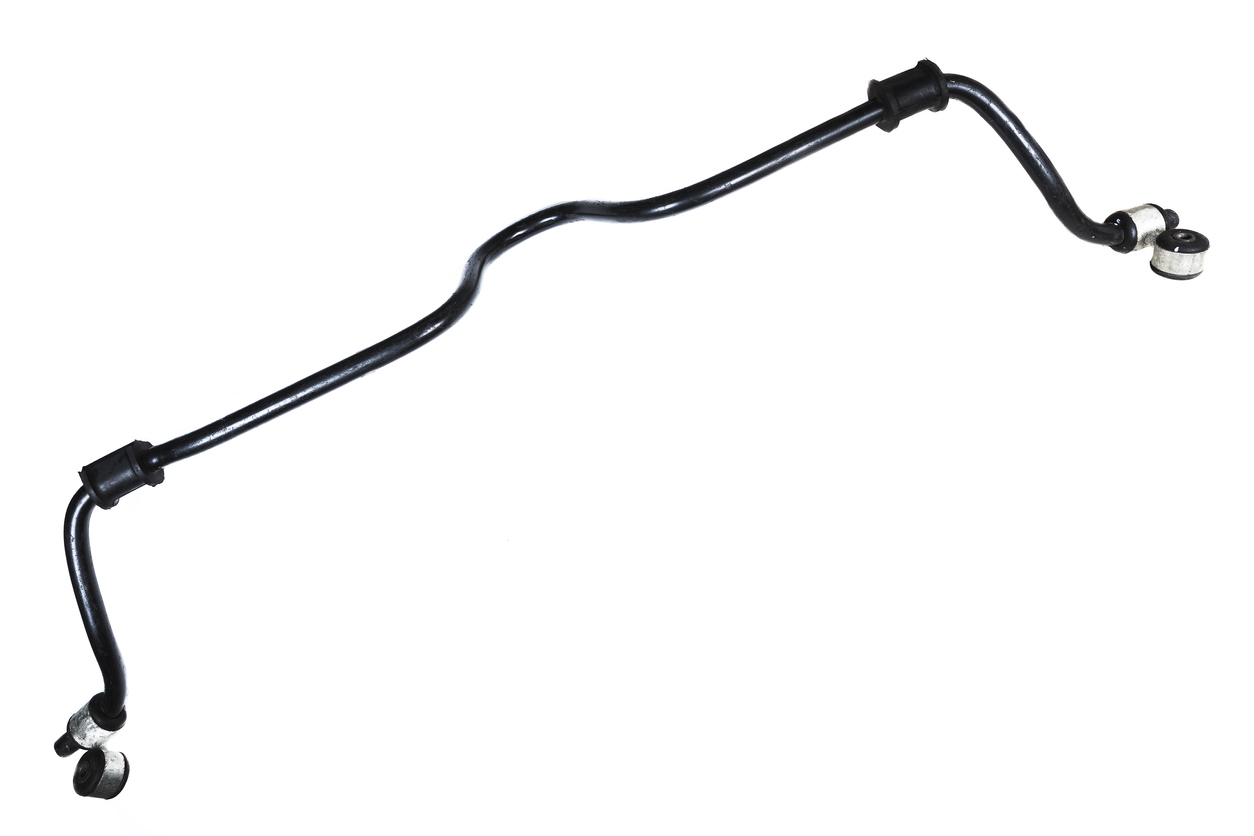Symptoms of worn out anti-roll bar links

This simple component has a large impact on your car’s handling performance and stability when taking turns or making swift manoeuvres. If the bar is broken, you may notice a difference in the vehicle’s steering and cornering may become more difficult. This could particularly pose a risk when driving at high speeds, which is why it’s important to keep a check on your anti-roll bar and get the suspension system serviced regularly.
The main purpose of the anti-roll bar, also known as the anti-sway bar or stabilizer bar, is to prevent excessive body roll when the vehicle turns into a corner. As it starts to turn, its weight naturally shifts to the outside of the corner, causing the car to lean or “roll” to the side. If the car body rolls too much, it can negatively impact the wheel alignment and result in reduced traction. The anti-roll component connects both sides of the suspension on an axle, keeping the car body flat by shifting force from one side to the other and thus reducing body roll. Moreover, it is designed to achieve this without significantly affecting the stiffness of the suspension springs.
In its simplest form, the component is a U-shaped steel bar connected to the suspension system by bushings and stabiliser links. Designs can vary in terms of shape and solidity. High-performance vehicles may also include an active anti-roll bar system. This is where a motor or hydraulic actuators adjust the torsion on either side of the bar automatically and in real time.
COMMON PROBLEMS AND CAUSES
Wear and tear: Although the stabilising bar is often made to last as long as the car itself, it is not uncommon for the links and rubber bushings to wear and deteriorate or corrode over time. As a result, the part becomes loose and less effective. These parts are generally less durable and may even need to be replaced as soon as the 60,000 mile mark.
Overdoing it: It can be assumed that the thicker or stiffer the bar is, the more weight it can take and the higher its capacity to minimise body roll. Increasing the diameter or stiffness of the bar will also increase or decrease understeer or oversteer depending on the type of drivetrain and whether it is located on the front or rear side of the vehicle. Anti-roll bar tuning has to be done with mathematical precision and there is always a risk of overdoing it. When the suspension is too stiff, the tyres may lose grip, bumps in the road will feel rougher, and there may be a decrease in overall vehicle stability.
SYMPTOMS OF A BAD ANTI-ROLL BAR LINK OR BUSHING
Clunking or rattling noise. If you start to hear a clunking, rattling or scraping sound coming from near your tyres when you’re driving, the culprit may be a broken link or bushing. For example, when a stabiliser link breaks, the bar is no longer firmly attached and can knock against other parts of the vehicle. This may be more noticeable when going around corners and bends.
Poor handling or loose steering. Stabiliser links are also attached to the lower control arm, having a direct impact on steering and handling as they deteriorate. When the stabilising bar isn’t connected to the body structure properly, it can’t counteract body roll effectively, and the vehicle may swerve or sway from side to side. The driver may have noticeably less control over the direction of the car when steering.
Visible wear. Lastly, wear is one of the easiest signs to spot when conducting a visual inspection of the suspension components. You may notice that the bushings have hardened and cracked, and the parts may look slightly deformed when they are worn down. These damaged parts will need to be replaced promptly.
WOULD A BAD ANTI-ROLL BAR AFFECT MY CAR?
Defective bushing and links or a loose anti-roll bar, among other suspension problems, could cause you to fail your MOT due to the safety risks posed. Although it is still possible to drive with a faulty anti-roll bar, the safest thing to do is to replace or repair the parts as soon as you can to avoid an accident.

 Loading..
Loading..